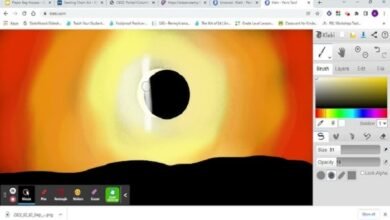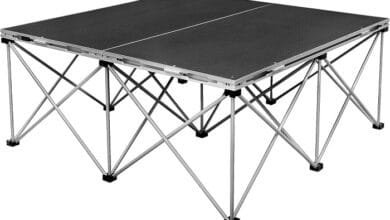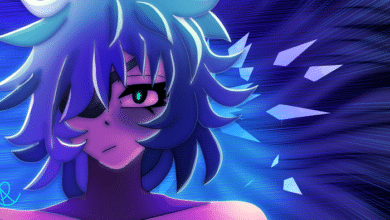
Photography and design have evolved tremendously in recent years, thanks to the advancements in technology. From professional photographers to casual users, everyone now has access to powerful tools that help them manipulate images with ease. One such tool is Photoleap, a photo editing application that has captured the attention of millions. But what does “unfite photoleap” mean, and how does it relate to the current photography trends? In this blog post, we will explore the meaning of “unfite photoleap,” its applications, and its growing impact on photo manipulation.
What is Unfite Photoleap?
“Unfite photoleap” is a term that has recently gained traction in the world of photography, design, and photo editing. To fully understand this concept, we need to break down the term. The phrase “unfite” refers to something that does not fit or is not aligned correctly. In the context of Photoleap, it suggests a situation where an image or a part of an image does not fit the intended design or aesthetic when edited. This could be due to several reasons, such as improper cropping, scaling issues, or inconsistencies in visual style.
Photoleap, on the other hand, is a widely used photo editing app that offers various tools for enhancing and manipulating photos. It allows users to apply filters, merge images, add text, and more. When combined, “unfite photoleap” indicates instances where the editing process doesn’t align with the intended visual outcome.
The Role of Photoleap in Modern Photography
Before diving deeper into the idea of “unfite photoleap,” it’s essential to first understand the role of Photoleap in modern photography. Photoleap offers several features that enable photographers and designers to manipulate images, improve aesthetics, and create unique visuals. Its intuitive interface makes it a popular choice for both beginners and professionals. Users can layer images, change backgrounds, and adjust various elements to create a more refined and polished final result.
Photoleap has become a key tool for those involved in content creation, marketing, and social media. The application’s ability to merge images, adjust lighting, and perform detailed editing gives users a high degree of flexibility when working with photos. However, as powerful as Photoleap is, one of the challenges users face is ensuring that all components fit perfectly together. This is where the term “unfite photoleap” becomes significant.
How “Unfite Photoleap” Affects Photo Editing
When using Photoleap, achieving a cohesive and visually pleasing design is crucial. However, not every image or layer fits seamlessly with the others, and this can result in an “unfite photoleap.” For example, consider an image where the background is adjusted but the subject does not blend well with it. This inconsistency can cause a lack of harmony, making the final design appear disjointed. Such issues may arise due to incorrect image scaling, improper alignment, or inconsistent color grading.
The term “unfite photoleap” captures these moments when images or elements appear out of place, disrupting the overall visual balance. This could happen when one layer is too large, another is too small, or when a background color does not match the tone of the subject in the foreground. To avoid an “unfite photoleap,” designers must ensure that all components work together cohesively, which requires a strong understanding of design principles and the tools available in the app.
Common Issues That Lead to “Unfite Photoleap”
Several issues can contribute to an “unfite photoleap” when editing photos. These problems can arise from both technical and creative aspects of the photo manipulation process. Here are some of the most common reasons:
1. Improper Scaling
Scaling issues often occur when resizing images. For instance, if an object is scaled disproportionately, it may appear stretched or compressed, disrupting the balance of the image. This can lead to an unnatural look, making the image appear “unfite.”
2. Misalignment
Aligning various elements within an image is crucial for achieving a polished and professional look. If the layers or components are not properly aligned, it can result in an unbalanced composition that may look awkward or “unfite.”
3. Color Inconsistencies
Photoleap provides tools for adjusting the color grading of an image, but it’s easy to make mistakes when trying to match different elements. When one layer has a different color tone than the rest of the image, it can create an “unfite photoleap.”
4. Lighting Mismatches
Lighting is a critical factor in photography. When combining multiple images with different lighting sources, the final result may have parts that are too bright or too dark, causing an “unfite” effect. Ensuring proper light consistency is essential when editing images with Photoleap.
5. Inconsistent Resolution
Using images with varying resolutions can also lead to an “unfite photoleap.” Images with low resolution can appear pixelated when scaled up, while high-resolution images might look too sharp against softer images, disrupting the flow of the composition.
Solutions to Avoid an “Unfite Photoleap”
Now that we’ve identified the common causes of an “unfite photoleap,” it’s important to discuss how to resolve these issues. Fortunately, there are several strategies that users can employ to ensure that their edits are cohesive and visually appealing.
1. Proper Image Sizing and Scaling
To avoid scaling issues, make sure to maintain the aspect ratio of images when resizing. This ensures that images remain proportionate and do not distort. Photoleap allows users to resize elements while preserving their original proportions, making it easier to avoid an “unfite photoleap.”
2. Use Alignment Guides
Photoleap includes alignment tools that help users position elements accurately. These guides help ensure that images and text are placed symmetrically and align with each other, eliminating any misalignment that might lead to an “unfite” design.
3. Match Color Tones
When editing multiple elements, it’s essential to adjust the color grading and brightness levels to match. Photoleap provides filters and adjustment options that allow users to fine-tune the color tones, ensuring that all components blend seamlessly.
4. Consistent Lighting
To achieve a balanced lighting effect, consider using similar light sources for all the images or adjusting the brightness levels to ensure uniformity. Photoleap allows users to adjust exposure and shadow levels, which helps create a consistent lighting environment for all elements.
5. Use High-Resolution Images
Using high-resolution images and ensuring that all components have the same resolution can help avoid pixelation or blurry elements. When working with images of varying resolutions, consider adjusting the sharpness and resolution settings within Photoleap to maintain consistency.
The Future of “Unfite Photoleap” in Photography and Design
As photo editing tools like Photoleap continue to advance, the concept of “unfite photoleap” will likely evolve as well. With new features being added to photo editing apps and AI-powered tools becoming more integrated into the process, the potential for creating seamless and flawless designs is greater than ever.
In the future, “unfite photoleap” may be a thing of the past, as more sophisticated tools and editing techniques will help users avoid these issues altogether. However, the key to mastering Photoleap and other photo editing applications will always be a strong understanding of design principles and the ability to fine-tune each element to perfection.
Conclusion
In conclusion, the term “unfite photoleap” highlights the challenges and inconsistencies that users encounter when editing photos and designs. Whether it’s due to improper scaling, alignment issues, or color mismatches, these problems can disrupt the overall composition and make the image look unpolished. However, by using the right techniques and taking advantage of the powerful features available in Photoleap, users can avoid these pitfalls and create cohesive, visually appealing designs. As technology continues to evolve, the future of photo editing and design holds even more exciting possibilities.
FAQs
- What does “unfite photoleap” mean? “Unfite photoleap” refers to situations where elements in a photo editing project using the Photoleap app do not fit together cohesively, often due to scaling, alignment, or color issues.
- How can I fix an “unfite photoleap” in my photo? To fix an “unfite photoleap,” ensure proper image scaling, alignment, color matching, and resolution consistency. Photoleap offers tools to help address these issues.
- Is Photoleap a beginner-friendly app for photo editing? Yes, Photoleap is designed to be user-friendly, offering intuitive tools for both beginners and professionals to enhance and manipulate photos with ease.
- Can I avoid “unfite photoleap” by using pre-made templates? Using pre-made templates in Photoleap can help avoid some issues, but it’s still important to adjust the design to ensure that all elements fit seamlessly together.
- Will “unfite photoleap” become obsolete with future updates to the app? While future updates to Photoleap may introduce more advanced features, the concept of “unfite photoleap” will likely remain relevant as long as design principles and photo manipulation are a key part of the editing process.





